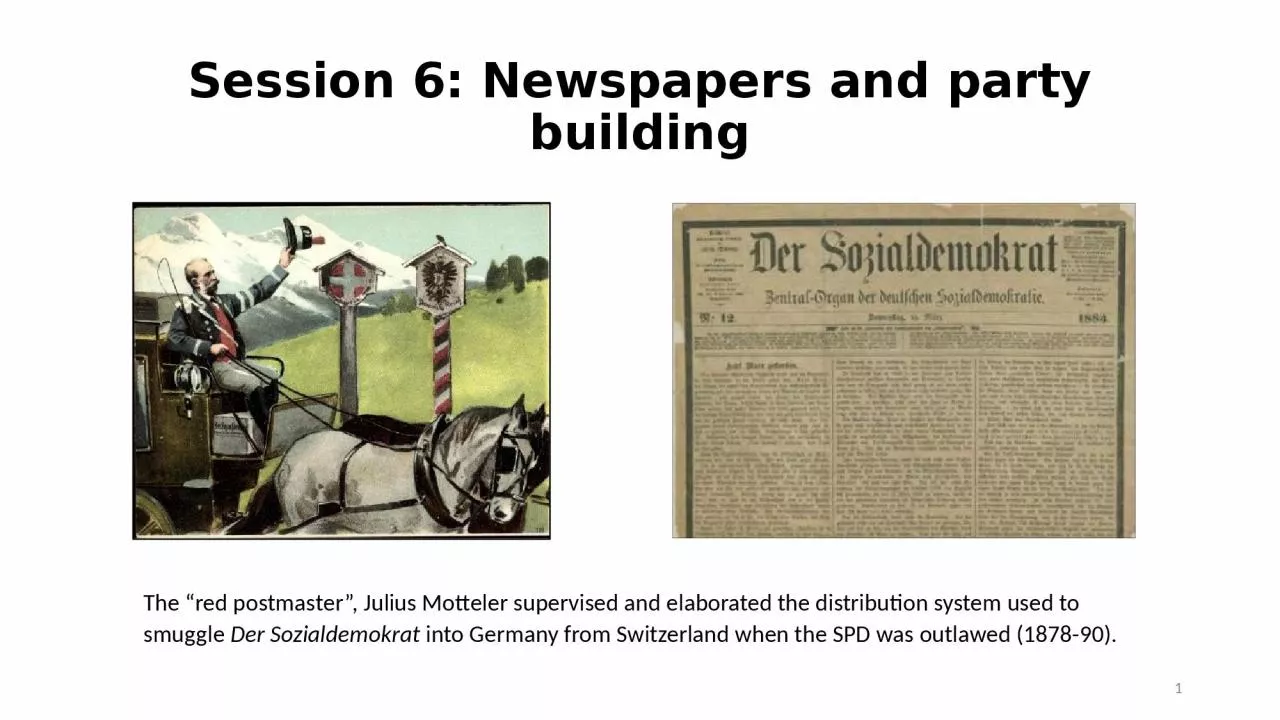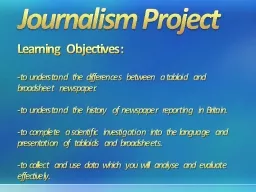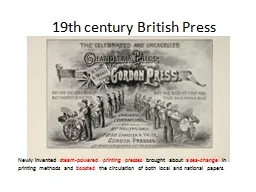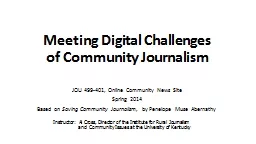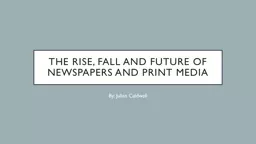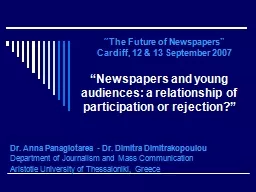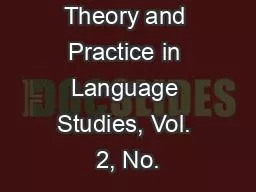PPT-Session 6: Newspapers and party building
Author : samantha | Published Date : 2024-01-03
The red postmaster Julius Motteler supervised and elaborated the distribution system used to smuggle Der Sozialdemokrat into Germany from Switzerland when the
Presentation Embed Code
Download Presentation
Download Presentation The PPT/PDF document "Session 6: Newspapers and party building" is the property of its rightful owner. Permission is granted to download and print the materials on this website for personal, non-commercial use only, and to display it on your personal computer provided you do not modify the materials and that you retain all copyright notices contained in the materials. By downloading content from our website, you accept the terms of this agreement.
Session 6: Newspapers and party building: Transcript
Download Rules Of Document
"Session 6: Newspapers and party building"The content belongs to its owner. You may download and print it for personal use, without modification, and keep all copyright notices. By downloading, you agree to these terms.
Related Documents

